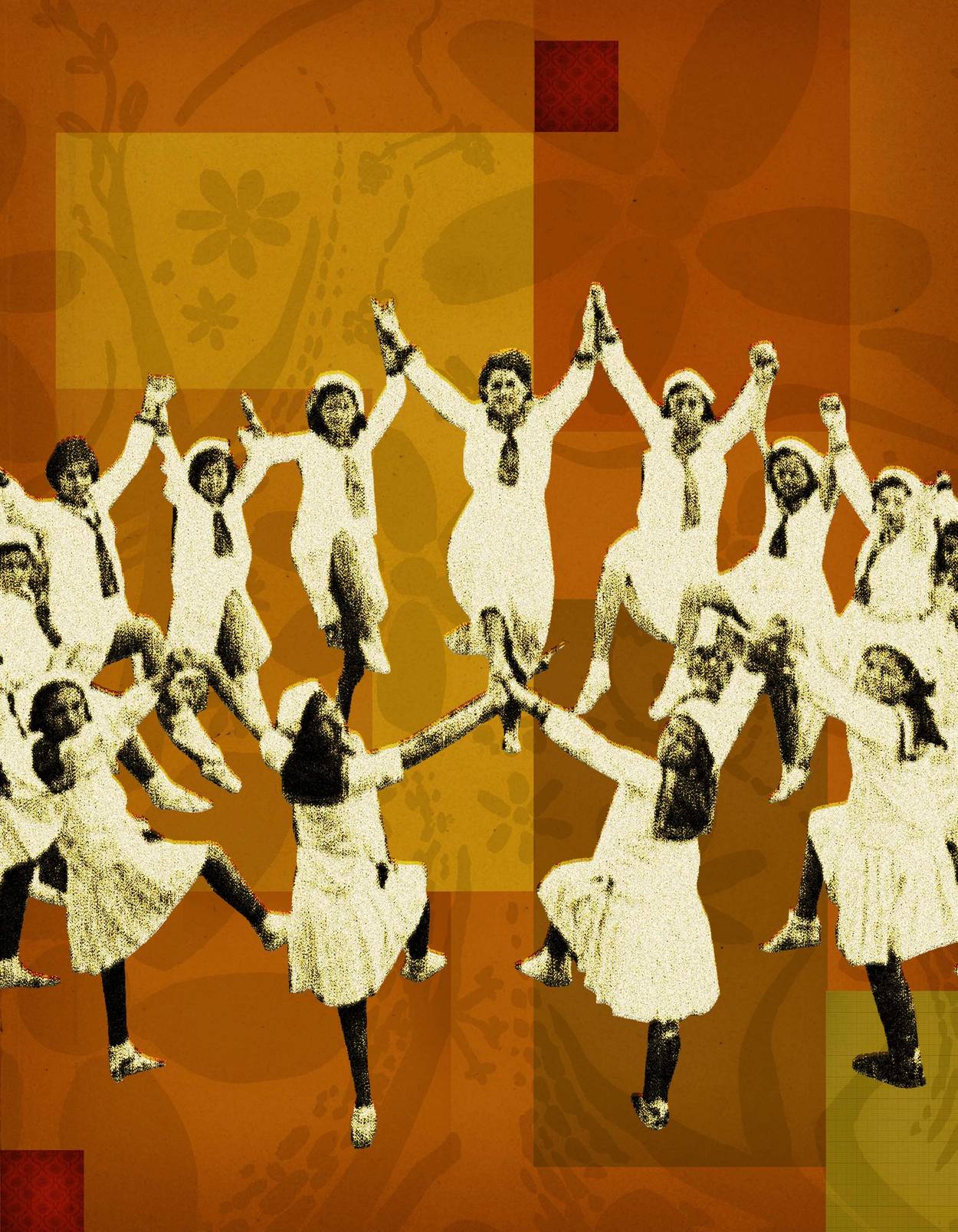Love Fest
How Tu B’Av can cure tribalism, heal hate, and make us all better people




We have had a heck of a year. Plagues, protests, and fractured politics all seem to point to Tisha B’Av as the quintessential Jewish holiday of 2020. After all, its mournful tone is a mirror of our age, in which senseless hatred and divided polity seem to signal the destruction of today’s temples. But the holiday we need right now comes less than a week later, on the 15th of the month of Av, reminding us, in the words of Leonard Cohen, that musical Jeremiah, that “love’s the only engine of survival.”
Don’t worry if you haven’t even heard of it. Too often dismissed as “Jewish Valentine’s Day” if it’s commemorated at all, Tu B’Av is no one’s idea of a major holiday. But look into its lovely rituals and origins, and you’ll discover a day dedicated not only to romance but also to a shockingly modern vision of social justice: A millennium and a half before think-tank presidents taught that decent citizens can “save America from the culture of contempt” by loving their enemies, and pundits pleaded that institutions be strengthened not shuttered amid Instagrammed identity politics, our sages gave us a day dedicated to awakening the spirit and cultivating radical empathy.
Read about the holiday’s origins, and they may sound more transactional than transcendent. The Talmud in Tractate Ta’anit explains that on the 15th of Av it had been decreed that Jews could marry across tribal lines: Entering the Land of Israel after 40 years in the desert, the Israelites needed some mechanism to divvy up the new land based on population size, as well as a streamlined mechanism for property inheritance. For the most part, that meant keeping marriages between people from the same tribe, which makes things much easier. But on Tu B’Av, all bets were off, and love, not tribalism, was permitted to carry the day. And ever since, that day became an ancient National Dance Day, only much better:
The daughters of Jerusalem would go out in white clothes, and on the 15th of Av they would go out to the vineyards and dance. The Sages taught this tradition in greater detail: The daughter of the king borrows white garments from the daughter of the High Priest; the daughter of the High Priest borrows from the daughter of the deputy High Priest; the daughter of the deputy High Priest borrows from the daughter of the priest anointed for war; the daughter of the priest anointed for war borrows from the daughter of a common priest; and all the Jewish people borrow from each other. Why would they all borrow garments? They did this so as not to embarrass one who did not have her own white garments.
In other words, it wasn’t enough to just lift any and all restrictions on marriage. For the disparate tribes, accustomed to decades of nomadic life, to cohere into one nation, into one people, they needed to experience a major psychological, emotional, and economic leveling. This was best done by literally making them borrow each other’s clothes and walk a mile or two in each other’s shoes.
Thousands of years prior to psychologists’ lamenting the debilitating effects of contempt, that social disease “less flashy than hate“ but “more deadly” (as Zadie Smith recently put it), expressed and amplified exponentially through all manner of media, Benjaminites and Judahites, Ephramites, and Reubenites took a day to stop waving the flags of their identity. The banner bearing the roaring lion of Judah took a pause. The snake symbolizing Dan remained coiled. None flew higher or stronger than the other, none led and none was forced to follow.
Gone, too, were displays of economic disparity. The size of one’s inheritance no longer dictated who you schmoozed with. Something borrowed led to social cohesion.
Of course, one day’s break from difference was not a John Lennon-style imagining of no possessions or distinctions. But Tu B’Av was a day when all could at least dance together. Maybe, like all dances before and since, not everyone was able to throw off their inhibitions and hit the floor. Maybe some shifted their feet awkwardly or loitered at the drinks table. But all showed up, having stepped outside of their normal concerns, and stopped signaling, just for a moment, their virtues. And the joy felt that day matched that of the holiest day of the year.
The events of recent months have made it clear that, to paraphrase my favorite British romantic comedy, love is, unfortunately, not all around. Tribally drawn lines seem to be marked in the sands of social media by the millisecond, economic disparity exacerbates all manners of societal ills, and it feels like we’ve forgotten how to move. But Tu B’Av offers a glimpse into a different possibility. Unlike Yom Kippur, it doesn’t require cantorially led, formal, and often difficult to follow all-day services. It simply asks us to remember the unifying possibilities of emerging from our echo chambers, stepping into each other’s shoes, and dancing together. Even if only for a day.
Rabbi Dr. Stuart Halpern is Senior Adviser to the Provost of Yeshiva University and Deputy Director of Y.U.’s Straus Center for Torah and Western Thought. His books include The Promise of Liberty: A Passover Haggada, which examines the Exodus story’s impact on the United States, Esther in America, Gleanings: Reflections on Ruth and Proclaim Liberty Throughout the Land: The Hebrew Bible in the United States.